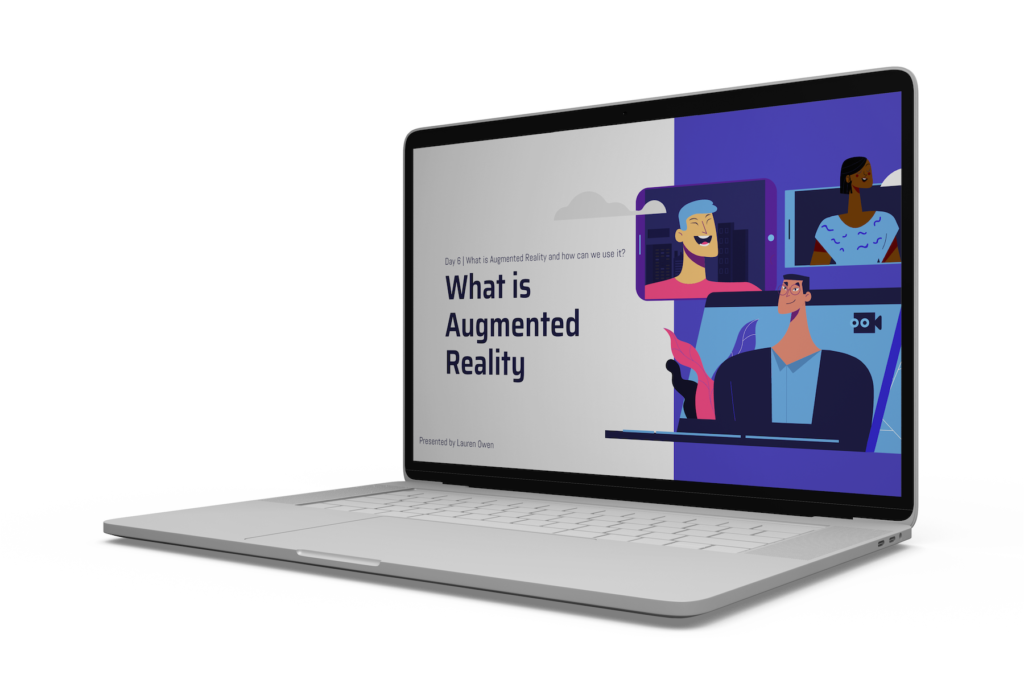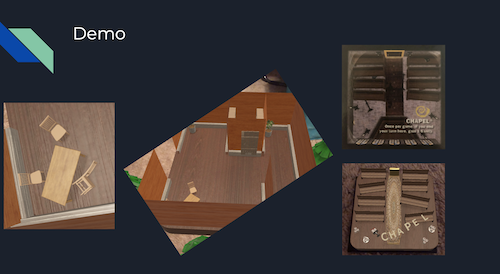XR Through Virtual Worlds
NYU Curriculum Development and Teaching
July 2020 – August 2020

Developed augmented reality curriculum and created daily lesson plans on UX design processes, user journeys, and spacial experiences for multiple platforms including iOS and android for New York University’s summer STEM program for over 30 students in two sessions.
View course website here.
View student work here.

Syllabus
Course Objectives
Students will gain a solid understanding of augmented reality technology, its evolution over the years, and the practices and tools necessary to create immersive, storytelling experiences.
Students will reinvision the games created in Twine as AR experiences and learn about and use the UX design process to build out one scene using an AR platform of their choice.
Course Schedule
Unit 1: What is Augmented Reality and How Can We Use It?
Class One
What is Augmented Reality
- Meaning
- History
- Types
- Projection
- Recognition (Marker-Based)
- Location (Marker-less)
- Outlining
- Superimposition
Working Session: AR Apps
- Download an AR app from your phone’s respective app store and plays with it. Review your experience with it.
Discussion: AR Apps
- Open forum for students share their reviews/feedback of the apps they chose
Class Two
How to create an AR application
- UX Design Process Overview
- Understand
- Research
- Sketch
- Design
- Build
-
Platforms
-
Unity
-
Spark
-
Reality Composer
-
Blippar
-
-
-
Evaluate
Working Session: AR Apps
Download and sign-up for Blippar. Explore the platform.
Unit Project
- Sign up for Blippar and create something, anything you want. Try deploying it to your phone. Take screen shots or record.
Brainstorm ways you can use the platform to make your narrative twine game come to life. How do you see your game layered over the our physical reality. Document your ideas by creating moodboards or mock-ups of your vision.
Unit 2: Planning Immersive AR Storytelling Experiences
Class One
Design Process – Understand
Requirements
User Personas
Journey Maps
Working Session: Understand
Using the worksheets, work through each of these components in terms of your own AR storytelling idea.
Class Two
Design Process – Research
- Competitive Analysis
- UX Trends
- Best Practices and Guidelines
Working Session: Research
- Conduct a brief competitive analysis of similar AR offerings. Let this inspire you, not discourage your own ideas.
- With the features you hope to incorporate in your app (haptic, audio, etc), research them. What are the best practices in implementing them? What should you avoid doing? Think about your users.
Class Three
Design Process – Sketch
- Gather Ideas
- Sketches and wireframes
- Evaluate and redraw
Unit Project
Using the user personas, case scenarios, best practices, and everything else you have learned today in class and through your additional research, sketch out your idea again. Compare it to what you sketched previously. How have things changed?
Create wireframes for one scene. Be prepared to share with the class.
Unit 3: Designing and Building Augmented Reality Applications
Class One
Design Process – Design
Assets
Types for AR
FBX
- OBJ
- Asset Resources
- Styling
- Prototypes
Working Session: Design
- Fill out the worksheet. Decide what your style is going to be. Are you continuing with your original game’s style or trying something new? Search for and collect your assets, this includes the assets you used for your game. Be mindful to find assets that are compatible with your platform of choice. Explore the stock assets those platforms provide as well.
Class Two
Design Process – Build
- Functionality
- Development
Working Session: Build
In individual breakout rooms, using your selected platform, begin building. Start to turn your wireframes into reality. I will be popping in to each room to check on status, answer questions, and provide additional assistance
Unit Project
- Continue to work on your first iteration. It does not have to be perfect. We will be refining them.
- Prepare to share your iteration with the class with screen shots, screen recordings or other documentation.
Unit 4: Feedback and Refinement
Class One
Design Process – Evaluation and Constructive Feedback
- Giving Feedback
- Positive phrasing
- Concreteness
- Action‐orientation
- Focus
- Receiving Feedback
- Reflection
- Discussion
Working Session: Design
- Share your screen shots, screen recordings or other documentation of your first iteration. Discuss your decision making and any challenges you experienced.
- Practice giving and receiving constructive feedback to peers on their projects.
- Write down all feedback received. How can you improve your ideas?
Discussion: Feedback
Briefly share your concept and the feedback you received.
Class Two
Design Process – Refinement
- Consolidating feedback
- Making updates
Working Session: Refinement
Use peer feedback received to continue working on your projects. I will be visiting each breakout room to discuss the feedback and refinements as well as answer any questions and assist in any technical difficulties
Unit Project
- Continue to work on the final iteration of your project. There will be class time tomorrow for debugging. Document how it works (images, videos)
- Create short presentation showing your work in each step of the design process. Presentations will be no more than 10 minutes person (5 minutes for design process, 5 min for feedback).
Unit 5: Implementation
Class One
Working Session: Debugging
Presentations – Final Projects
- Design Process (3 min)
- Demo (2 min)
- Questions (5 min)
Student Work







